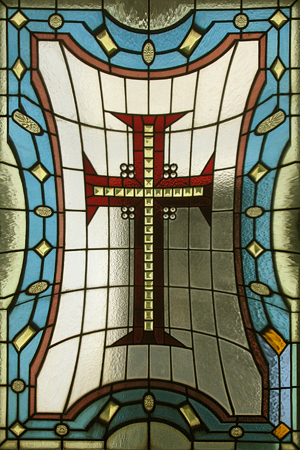
Sure, it’s Photoshopped… but it looks great. Don’t forget to play with your cemetery photos once you’re back home.
Leave a Comment
Sure, it’s Photoshopped… but it looks great. Don’t forget to play with your cemetery photos once you’re back home.
Leave a Comment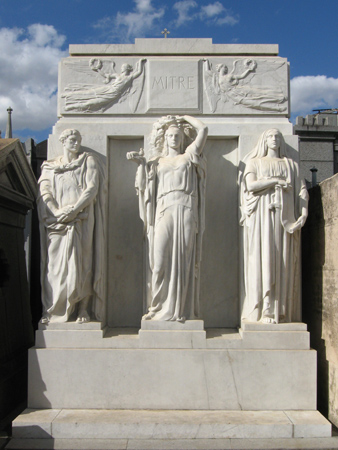
Born in Buenos Aires, Mitre grew up during the strict times of Juan Manuel de Rosas & even worked on one of the ranches owned by the former autocrat. Internal conflict kept Mitre on the move in his early years, living in Uruguay, Perú & Chile before joining the forces that defeated Rosas.
When Mitre was appointed to a high government position in Buenos Aires in 1852, he abruptly switched allegiances. Friends that had been instrumental in ousting Rosas were now his enemies. In favor of Buenos Aires becoming the national capital, Mitre’s attitude was best described by one provinicial strongman who openly challenged the national government:
Ser porteño es ser ciudadano exclusivista y ser provinciano es ser mendigo sin patria, sin libertad, sin derechos.
Being from Buenos Aires is like being an exclusive citizen while someone from the provinces is a worthless bum without homeland, without liberty & without rights.
Mitre’s political prowess continued to grow & was eventually elected President. During his one term in office, he committed Argentina to a horrible war against Paraguay. Hardly a popular campaign, Mitre’s successor would be the one left to negotiate peace & pick up the pieces.
During a later break from politics, Mitre wrote historical biographies, mainly of key figures during the wars for independence. Those books earned him a literary following among the upper class who financially supported Mitre’s longest-lasting contribution to Argentina… founding the newspaper La Nación. He attempted to win a second bid for the presidency but failed.
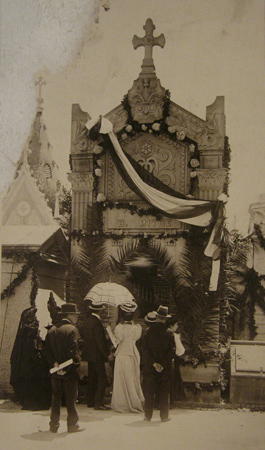
Mitre died in 1906, so the current Art Deco mausoleum does not fit with the date of his death. The original Beaux Arts vault (pictured above) was modified several times with the last change in 1938—the end of the Art Deco era in Buenos Aires. Simple yet majestic, figures from left to right represent the ideals of Duty, Argentina & Justice. For the 100th anniversary of Mitre’s death, much-needed restoration brought back the shine… just look at it before:
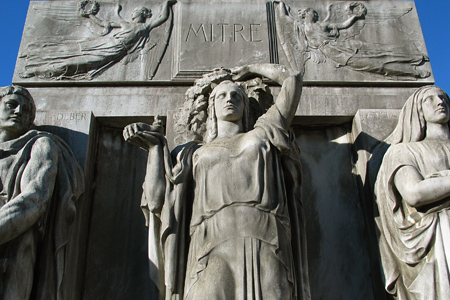
Mitre is respected enough to figure on the former 2 peso bill (retired from circulation in 2018), & the reverse depicts his house in downtown Buenos Aires just two blocks behind the cathedral. That residence, now home to the Museo Mitre, contains one of the largest collections of South American maps in the world… over 12,000:
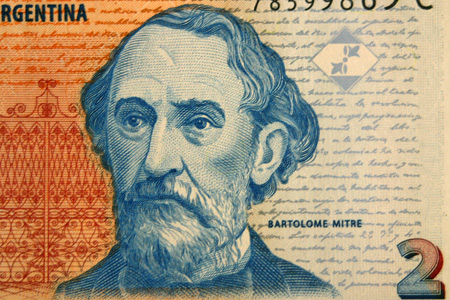
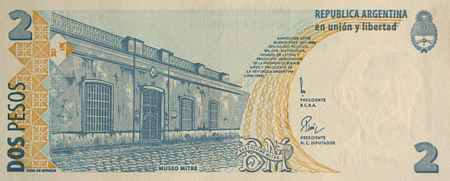
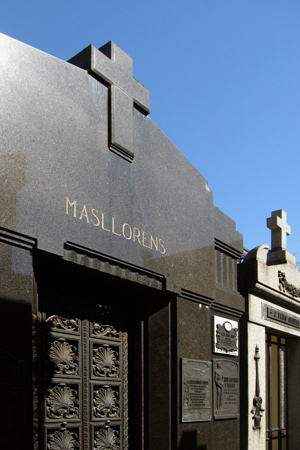
There’s not a more authentic Catalán name to be found in Recoleta Cemetery than Masllorens i Payerols. Substitute the “i” for a “y” for the Spanish version. Not much info is around as to why Pablo came from Catalunya to Buenos Aires, but the results of his labor are well known. Establishing the Emilio Ramírez publishing house, plaques come from former employees & managers, including one by artist Luis Perlotti:
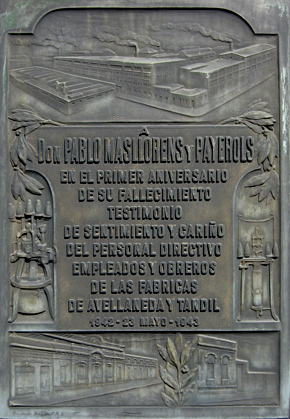
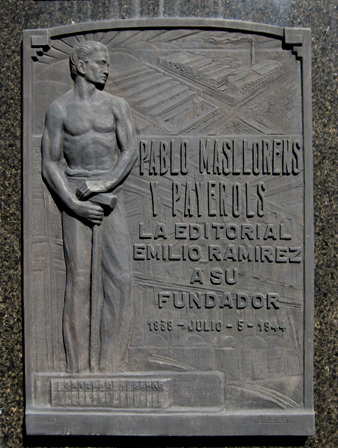
What makes this tomb noteworthy is that the company founded by Masllorens compiled & sold the first edition of a major science fiction comic, “El Eternauta.” Originally published as a weekly series from 1957 to 1959, the whole strip was printed as a magazine by the Editorial Emilio Ramírez in 1961:
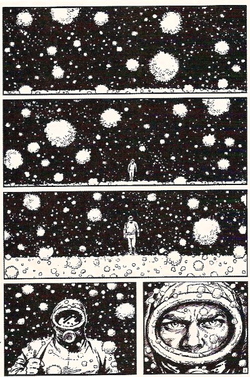
Here’s the plot… As an extraterrestrial invasion of Earth takes place, a few people in Buenos Aires figure out how to survive using specially made suits, protecting them from a deadly alien snowfall. A resistance army forms & battles are fought, but it becomes obvious that the true invaders aren’t around… they control everything from a distance. Juan Salvo, the protagonist, attempts to escape with his wife & daughter but accidentally triggers a time-travel device. The remainder of the series is about him trying to find them in the time continuum.
Sounds a bit normal now, but for the late 1950s the plot was very innovative. Various authors & artists have contributed to this successful story since then, & a single place in Buenos Aires pays tribute to El Eternauta… the subway station Uruguay on the B Line (north side, direction Alem). A tile mural depicts one of the comic panels. The first image is from Wikipedia & the rest are from Robert:

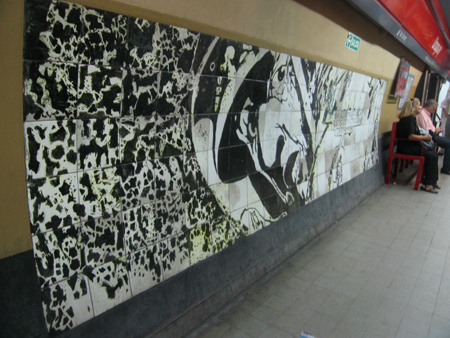
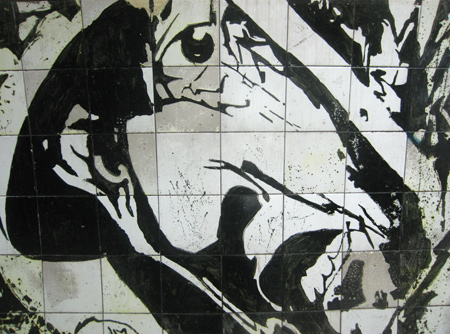
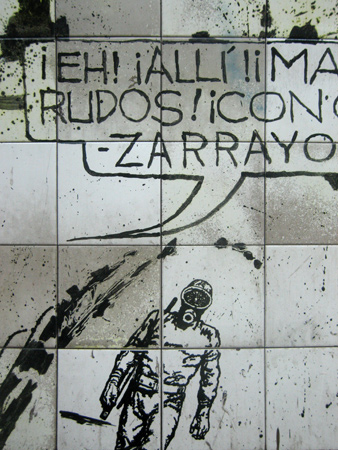
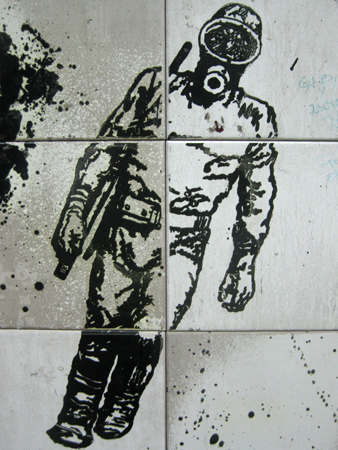
Although it’s well documented that the cemetery opened in 1822 & was later improved in 1881, there’s very little info in print about the official organization of family vaults. The following questions always get the best of me: How was it originally divided? What were the original limits of the cemetery? How did the current layout come about?
Fortunately, I found a book that provided some insight. During the last military dictatorship 30 years ago, a series of books & articles were printed by the city government under the collection name, Cuadernos de Buenos Aires. Elba Villafañe Bombal wrote #52 of the series in April 1974—published four years later in 1978—titled “Itinerario Histórico de Recoleta: Arte y Leyenda.” The volume is a valiant effort at cataloging the cemetery although there is a good bit of misinformation.
Obviously Bombal knew Recoleta Cemetery very well & was thorough in documenting its condition then, but perhaps she wasn’t the art & architecture historian she believed herself to be. Not to discredit her work, but several publications in later decades took Bombal’s text for granted without verifying sources. And to be fair, she credits a 1956 source by Jorge Kaudi called “Guía de Visitantes.” But that handbook is only a series of lists & cannot account for so many errors.
The one thing that intrigued me about Bombal’s book was the organizational map of the cemetery. I’ve reproduced it below using my own map as a guideline:
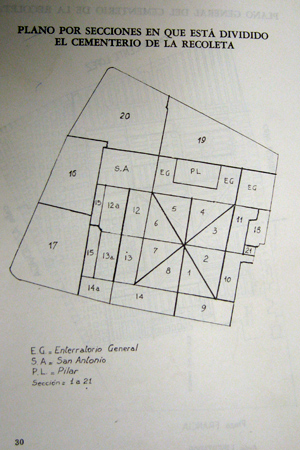
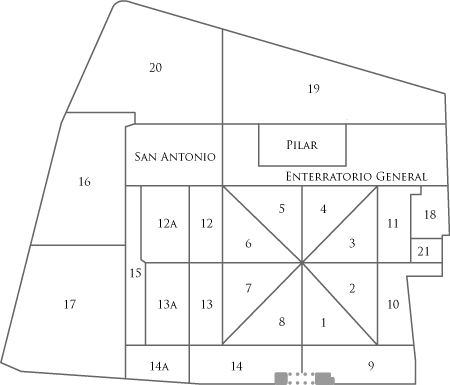
If sections were numbered as they needed to be used, then a sensible progression follows. I would make the assumption that sections 1 through 15 plus the named sections were the original limits of the cemetery. The anomaly of sections 18 & 21 were probably added later… which explains why that area is slightly higher than other parts of the cemetery.
Looking at the intersections while walking around also reveals some clues. Little signage is available to guide the visitor, but painted words & numbers at ground level guide the staff within the various sections:
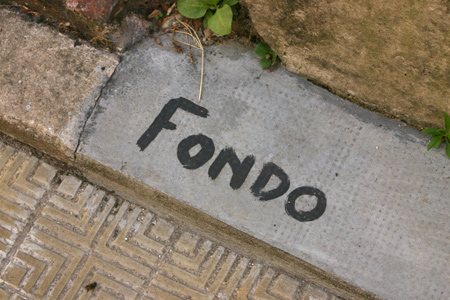
More investigation to come…
Leave a Comment